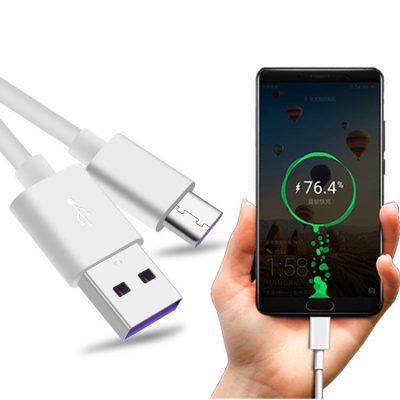Maximizing your charging speed with USB C to A cables involves understanding several key aspects of how these cables work and choosing the right ones for your needs. Here’s how to get the most out of your charging experience:
1. Choose the Right Cable Standard
- USB Power Delivery (PD): Look for USB C to A cables that support USB PD. This standard allows for higher power transfer, which can significantly speed up charging times. USB PD can deliver up to 100W of power, suitable for fast-charging laptops and other high-power devices.
- Cable Quality: Higher-quality cables with USB 3.1 or USB 3.2 standards typically support better power delivery compared to older USB 2.0 cables.
2. Match Your Charger and Device
- Power Adapter Compatibility: Ensure that your power adapter supports high wattage and is compatible with USB PD. A charger capable of 18W, 30W, or even 60W will charge your devices faster than a standard 5W adapter.
- Device Capability: Verify that your device supports fast charging. Devices designed to work with higher wattage will benefit more from USB C to A cables that support higher power delivery.
3. Check Cable Specifications
- Current Rating: Look for cables that can handle higher current ratings (e.g., 3A or 5A). Cables with higher current ratings are better suited for fast charging.
- Build Quality: Invest in cables with reinforced connectors and high-quality materials to ensure they can handle the high power levels without degrading performance over time.
4. Opt for High-Quality Cables
- Durability: Choose cables with robust construction, such as braided nylon or reinforced connectors, to ensure they can withstand frequent use without compromising charging speed.
- Certified Cables: Opt for cables certified by USB-IF or other reputable standards organizations. Certification ensures the cable meets performance and safety standards.
5. Use Shorter Cables When Possible
- Minimize Resistance: Shorter cables typically have lower resistance, which can improve charging efficiency. While longer cables offer more flexibility, they can sometimes reduce charging speeds due to increased resistance.
6. Consider Multi-Device Chargers
- Multiple Ports: Some multi-port USB chargers are optimized for fast charging across all ports. Ensure the charger supports USB PD and can deliver sufficient power to each connected device.
7. Avoid Cheap, Unverified Cables
- Performance Risks: Cheap, unverified cables may not support high power delivery effectively and can lead to slower charging or even damage to your devices. Invest in quality cables from reputable manufacturers.
8. Keep Your Devices Updated
- Firmware Updates: Sometimes, device firmware updates can improve charging performance or compatibility with fast-charging technologies. Ensure your device is running the latest firmware.
9. Maintain Your Cables
- Proper Care: Handle your cables carefully to avoid wear and tear. Avoid bending or twisting the cables excessively, as this can damage the internal wires and reduce charging efficiency.
10. Monitor Charging Speed
- Testing Tools: Use charging speed testing apps or devices to monitor and verify the actual charging speeds you’re getting with different cables and adapters.
By choosing the right USB C to A cables, using compatible chargers and devices, and ensuring high-quality construction, you can maximize your charging speed and enjoy quicker, more efficient charging for all your devices.







